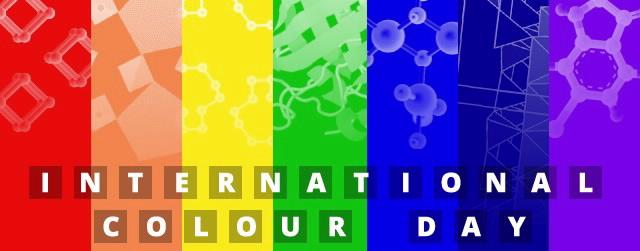

Published on the 21st March 2014 by ANSTO Staff
Today is International Colour Day, the day where we celebrate that remarkable phenomenon that is all too often taken for granted. In fact, few things affect us as much as colour.
 RedOxygen as a solid is red. Like many other materials, changing the pressure that oxygen is subjected to can dramatically change its physical properties. For example, if you pressurise oxygen to about 5 Gigapascals it will freeze. The crystal structure that it adopts at this point is the same as if you cooled it to about -240 °C and the solid itself has a faint (and almost sky) blue colour to it.
BUT, if you keep on with the pressure (and for these sorts of pressure you need your sample to be sandwiched between two diamonds) at about 10 Gigapascals the faint blue crystal will change to be a deep red colour, indicating quite a big change in crystal structure. This material is known as ε-oxygen, and is characterised by its groups of eight oxygen atoms which are bonded together in a cluster. Orange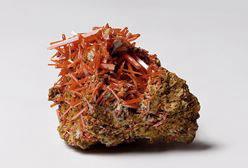 Crocite is an orange mineral. Despite its almost reptilian name and the fact that deposits of crocoite are found in Adelaide and Tasmania, this mineral is not named after any crocodiles. It’s actually named for its colour, with krocus the greek for saffron which came to the mind of François Sulpice Beudant when he discovered crocoite in the Russian Ural’s in 1832.
Yellow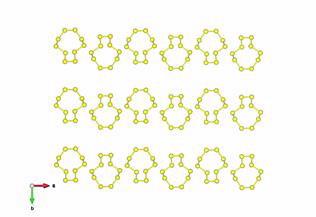 Another element of striking colour and perhaps not such a surprising inclusion in our Rainbow series is sulfur. Like carbon can be found in graphite and diamond, there are a large number of allotropes for sulphur. There have been observations of 6, 7 and even 16 member rings making up the basis of the large number of allotropes. The large range of sulfur compounds could be an explanation for the diversity of yellows we see on the surface of Jupiter’s moon Io.
Green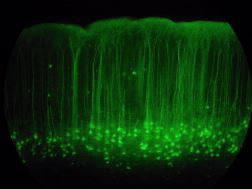 In the waters of the North Pacific there is a group of jellyfish that have been floating about the ocean and gently glowing green. This remarkable feature is due to a particular protein, which was first extracted from the jellyfish Aequorea victoria in 1961. This work on Green Fluorescent Proteins (GFP) earned the scientists working on it a Nobel Prize for chemistry in 2008.
Blue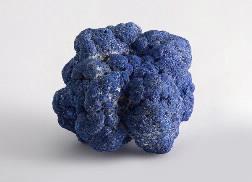 Indigo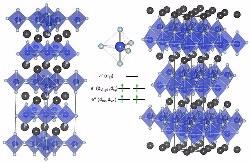 The Maya blue pigment is a composite of indigo dyes derived from the leaves of añil plants and palygorskite, a natural clay. The chemical composition of the compound was first determined by powder diffraction in the 1950s. Purple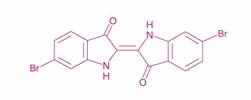 Learn more about the science of crystallography: http://www.ansto.gov.au/Resources/Crystallography/index.htm |